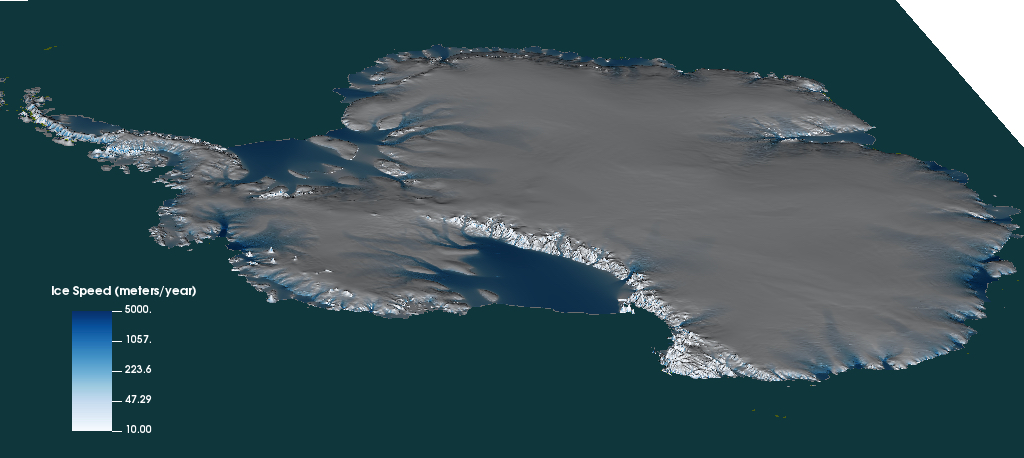Alumnus and New Fellow on Team Modeling Global Ice Melting
An alumnus and a new recipient of the Department of Energy Computational Science Graduate Fellowship (DOE CSGF) contributed to a study that quantifies how adhering to carbon emission limits could affect the impact of thawing ice on global sea-level increases.
The international collaboration used multiple computer models to calculate the effects of melting glaciers and global land ice on sea-level rise under a range of scenarios. The team concluded that if nations adhere to the Paris Agreement that aims to limit global warming to 1.5 degrees Celsius in this century, it could cut land ice’s contribution to rising ocean levels by half.

The study included input from the BISICLES ice sheet model, which alumnus Daniel Martin has co-developed over the last decade at Lawrence Berkeley National Laboratory, where he is a computational scientist.
Led by Tamsin Edwards of King's College London, the study combined a large number of computer models with statistical techniques to explore the land ice contribution to sea level in the 21st century arising from the world’s glaciers and the Greenland and Antarctic ice sheets, a Berkeley Lab release said. These predictions also will inform the Intergovernmental Panel on Climate Change’s (IPCC) Sixth Assessment report, which will be published later this year.
Besides Martin, co-authors include Courtney Shafer, a numerical modeling post-baccalaureate fellow in Berkeley Lab’s Computational Research Division. The project inspired her to pursue a Ph.D. in Geology with an emphasis in computational science and glaciology. She recently was named to the 2021-2022 incoming DOE CSGF class and will begin her doctoral studies at the University at Buffalo this fall.
“Two years out of undergrad,” Shafer told Berkeley Lab, “I never imagined that I would be contributing to such a large intercomparison project that will inform the IPCC report. It’s important work and will have a great impact on science and our future.”
Image caption: The Antarctic ice sheet with ice velocity painted onto the surface. Darker blue indicates faster-moving ice, which shows how the ice organizes itself into streams and flows to the sea in the same way that water flows and eventually pours into oceans. The fastest-moving (darkest blue) areas are regions where ice pushes out into the sea in floating shelves before they’re lost to the ocean, either via melting or calving into icebergs. Credit: Dan Martin, Berkeley Lab.


